All good things must come to an end and luckily for me, I am able to gain more knowledge on digital literacy. A recap on what digital literacy is about, it is the ability to use, create and share digital content safely and responsibly (Infocomm Media Development Authority, 2017).
In simple words, it is all about the content.
Here’s a simple video to show what digital literacy is all about:
Source: University of Derby YouTube
But are we really digital proficient? A survey conducted by International Computer Driving License Asia, it was found that local tertiary students overestimated their digital proficiency. Global passing standard stands at 75 per cent but Singapore students only stood at 55 per cent based on the results.
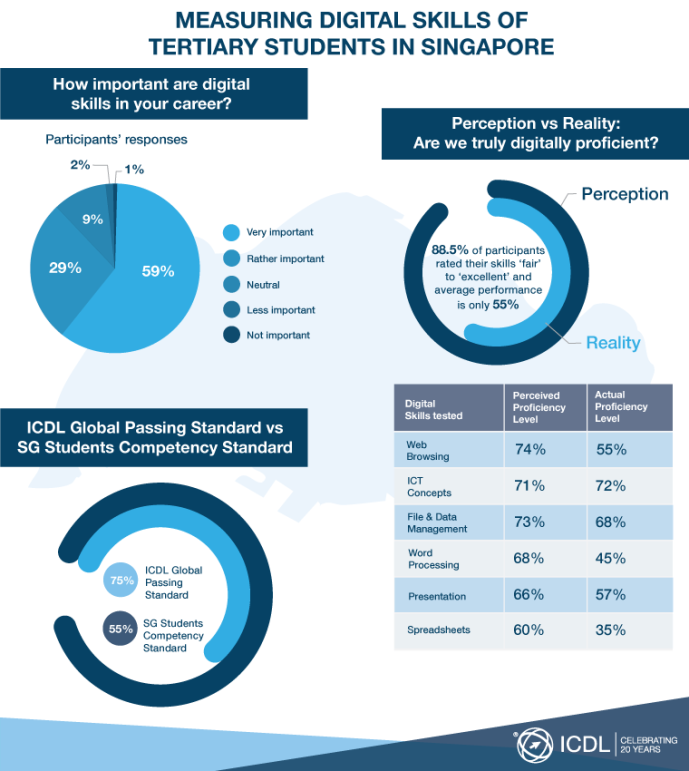
Source: International Computer Driving License Asia
This showed that despite efforts (my comment on Alicia’s post) taken by the Government, we failed to reach what other tech-savvy nations are doing.
I started off being an ignorant Internet visitor with little intention of using the Internet to achieve more than just search and social media updates. Throughout the three topics that we have been through, I was able to pick up new information from my peers’ perspectives. This is more effective for me as peer learning made it easier to absorb information but even so, information provided by my peers could be unreliable and caused confusion. Peer learning can be described as a way of moving beyond independent to interdependent or mutual learning (Boud et.al, 2014). In this module, we used reciprocal peer learning that emphasises students simultaneously learning and contributing to other students’ learning based on the topic given (Reis, 2002).
Throughout this module, I learnt that I am a digital visitor when it comes to digital platforms. I am a passive user on most of the social media sites and I am not committed to creating content on these platforms. I enjoy sitting back and receive content from others without contributing. This was the simple graphic I have done with reference to White theories (2011).
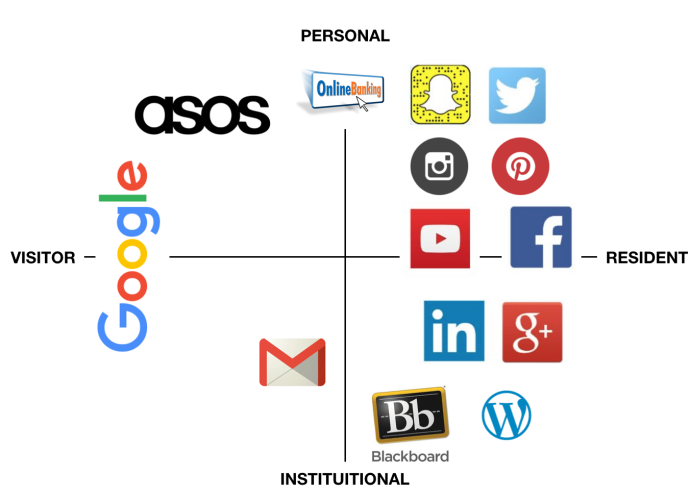
Infographic created by me
This is a graphic on how I behave as a resident or visitor on social media platform.
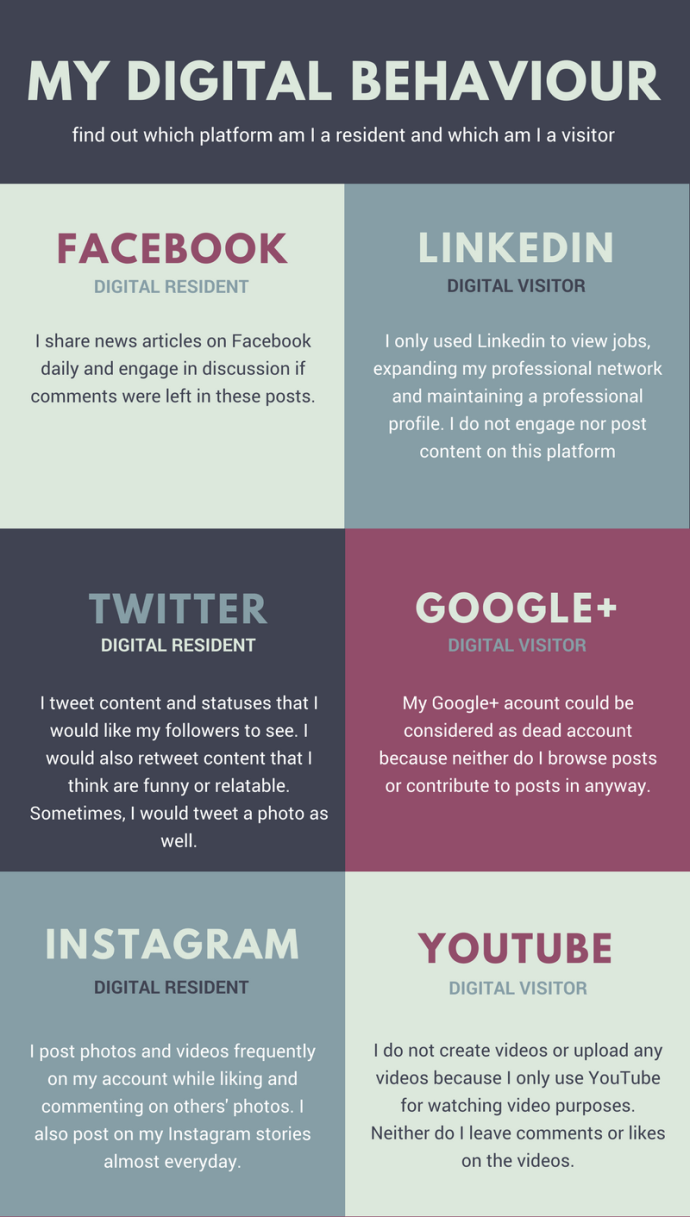
Infographic created by me
It should not be a surprise to you that most of the Internet users engage in passive activities like me. Institute of Policy Studies found that more people engaged in passive media usage compared to creating content across all social media platforms (2016).
I live in a developed nation that Internet allows us to learn from MOOC, purchase necessities from online supermarkets and maintain easy communication with friends all over the globe. As a digital citizen, it is important for me to know how I could protect myself and my data.
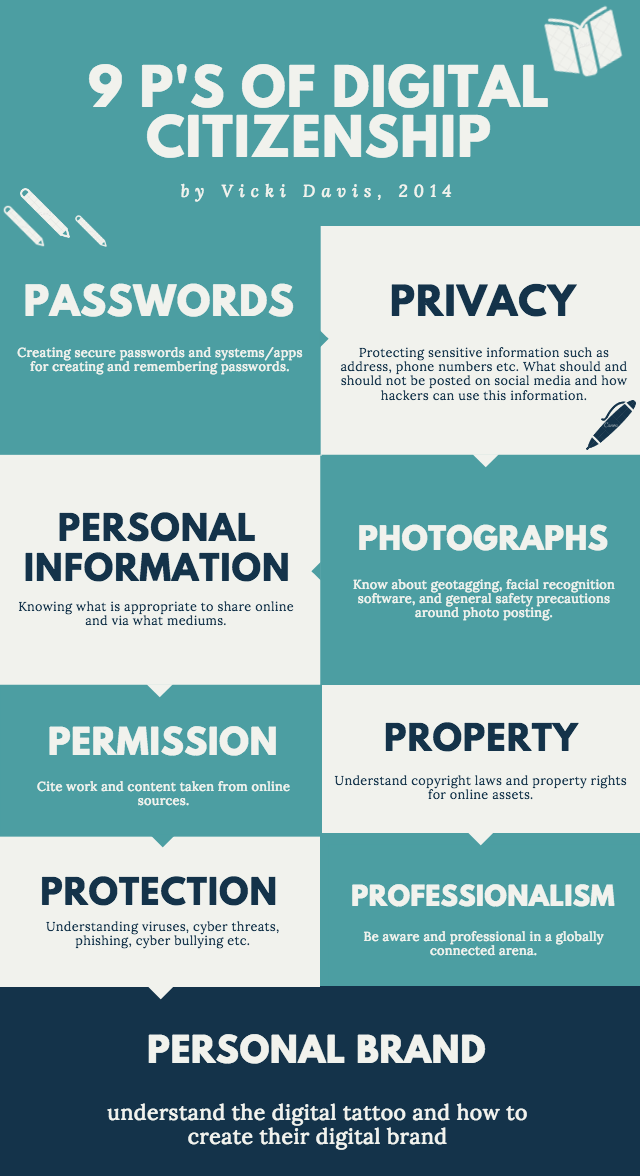
Source: Edutopia.Org
We process a lot of information online everyday – the ads that we see, the news that we read and the updates our friends shared. However, how much of them are fake? According to Pew Research Centre, 64% of adults believe fake news stories cause a great deal of confusion and 23% said they had shared fabricated political stories themselves – sometimes by mistake and sometimes intentionally (2016). I created a fake news exercise in my post and I have used it to test on some of my peers but not many were able to get it right because they trusted the “source”.
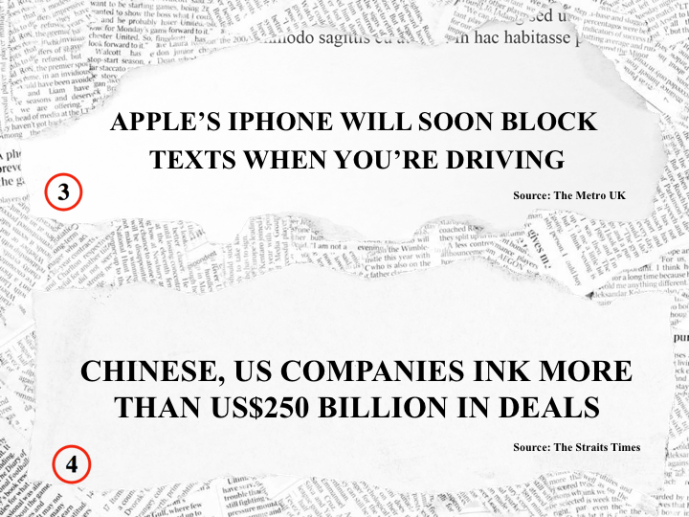

Infographic created by me
This topic showed me that social media users are vulnerable to fake news creators’ trap. If the fake content was shared by someone you know, you are more likely to trust it regardless the authenticity. Research done by American Press Institute in 2017, a trusted source on social media would results in more engagement which will contribute to the spread of fake news.
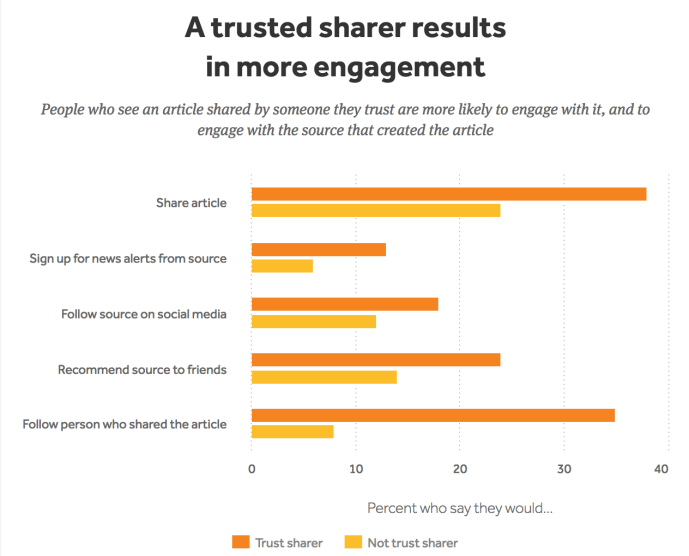
Source: Pew Research Centre
If most people trust content from known sources, then all of us have responsibility to make sure that we are sharing content that are truthful. It could be as simple as creating a true account and not hide behind a fake account that stir false information.
It is not easy to stay true online because there are many expectations of you that you would not like everyone to see. For example, showing your parents your post-party photos or showing your friends “uncool” photos of you in ugly pyjamas being comfortable at home.
This was an infographic that I have created for the post that shows how I stayed true (or not) for my online profiles. By hiding certain true information about myself on my online profiles, this showed that I contain certain “false” information. 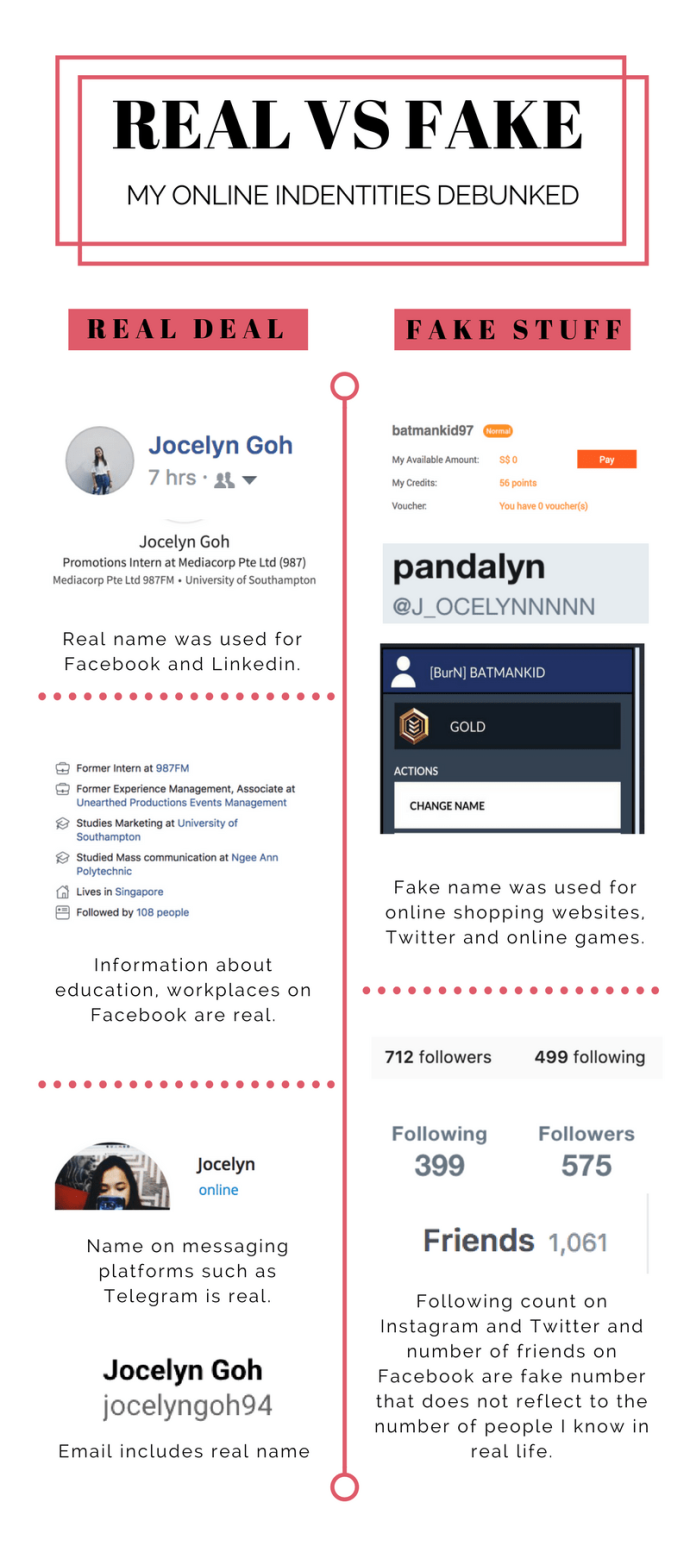
Infographics created by me
Through this module, I was able to be more critical about the information online and be more aware of my Internet activities could be improved. This is a before and after digital profile that I have created to visualise the changes.
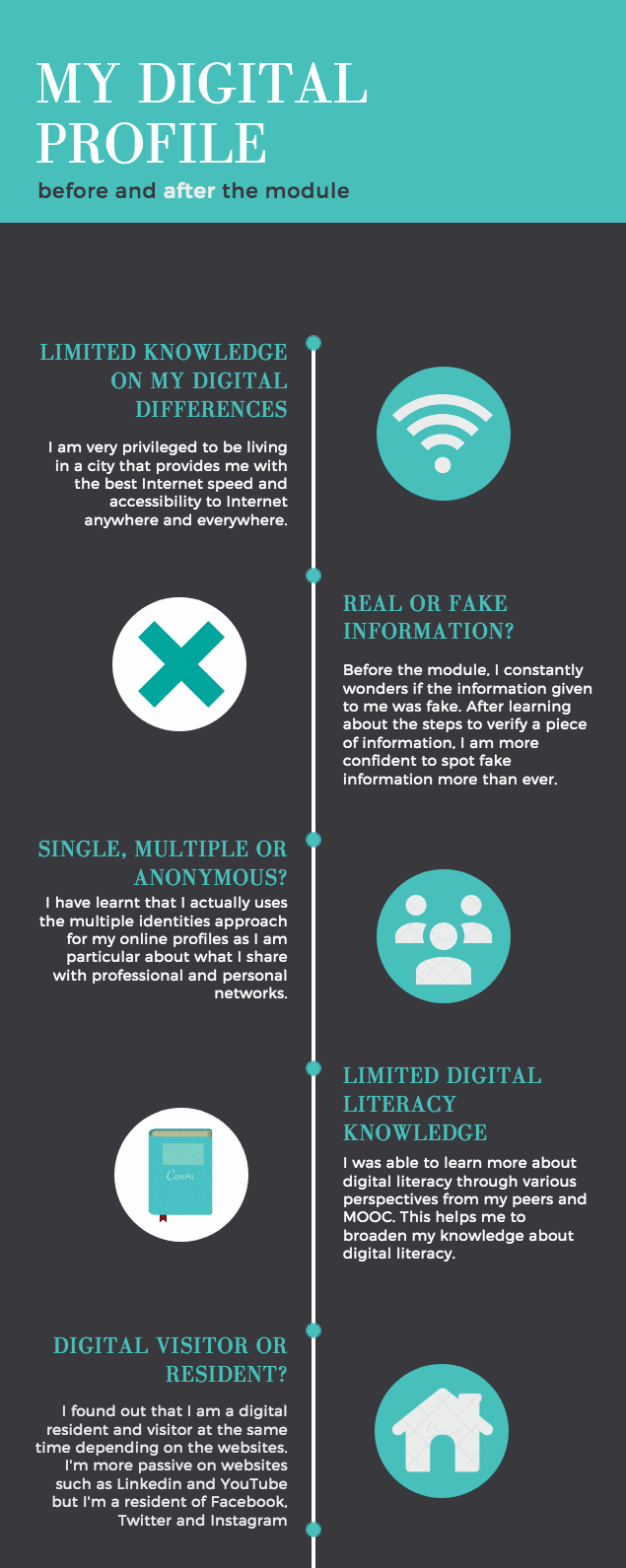
Infographics done by me
The digital era is only going to continue dominating communication and how information is passed on. With all the initiatives by the government and schools, it is important that we become an active user who practices such information and not a passive user who does not act on these information. It is not because we do not possess these information and guidelines, it is because we refuse to act on it.
Thank you MANG2049, it has been a great journey to learning more about digital literacy! Here’s a song to dedicate to our success:
(895 words)
Sources:
American Press Institute. (2017). ‘Who shared it?’ How Americans decide what news to trust on social media. Retrieved from https://www.americanpressinstitute.org/publications/reports/survey-research/trust-social-media/
Barthel, M., Mitchell, A., & Holcomb, J. (2016). Many Americans Believe Fake News Is Sowing Confusion. Pew Research Center’s Journalism Project. Retrieved from http://www.journalism.org/2016/12/15/many-americans-believe-fake-news-is-sowing-confusion/
Boud, D, Ruth C, Jane S. (2014). Peer Learning in Higher Education. Google Books. Retrieved from https://books.google.com.sg/books?id=_3B9AwAAQBAJ&pg=PA3&lpg=PA3&dq=It+can+be+described+as+a+way+of+moving+beyond+independent+to+interdependent+or+mutual+learning+(Boud,+1988).&source=bl&ots=ELFfkSmaDd&sig=28p2MLuJVssJPLrcsVUq-zFrW9w&hl=en&sa=X&ved=0ahUKEwi_s_mvhOTXAhUDpI8KHfrZBQIQ6AEILTAB#v=onepage&q=It%20can%20be%20described%20as%20a%20way%20of%20moving%20beyond%20independent%20to%20interdependent%20or%20mutual%20learning%20(Boud%2C%201988).&f=false
Davis, V. (2014). What Your Students Really Need to Know About Digital Citizenship. Edutopia.Org. Retrieved from https://www.edutopia.org/blog/digital-citizenship-need-to-know-vicki-davis
Infocomm Media Development Authority. (2017). Imda.gov.sg. Retrieved from https://www.imda.gov.sg/community/consumer-education/digital-literacy
International Computer Driving Licence (2017). ‘PERCEPTION AND REALITY’ STUDY IN SINGAPORE. ICDL International Computer Driving Licence. Retrieved from http://www.icdlasia.org/icdl-news?i=2834
Institute of Policy Studies (2017). Lkyspp2.nus.edu.sg. Retrieved from http://lkyspp2.nus.edu.sg/ips/wp-content/uploads/sites/2/2016/01/Report_-IPS-Symposium-on-Media-and-Internet-Use-During-General-Election-2015_180316.pdf
Oecd.org. (2017). Skills Matter: Further Results From The Survey of Adult Skills. Retrieved from https://www.oecd.org/countries/singapore/Skills-Matter-Singapore.pdf
Pew Research Centre. (2017). The Future of Truth and Misinformation Online. Pew Research Center: Internet, Science & Tech. Retrieved from http://www.pewinternet.org/2017/10/19/the-future-of-truth-and-misinformation-online/
Reis, R. WHAT IS PEER LEARNING AND WHY IS IT IMPORTANT?. (2002). Web.stanford.edu. Retrieved from https://web.stanford.edu/dept/CTL/Tomprof/postings/418.html
The Undertones – Smarter Than U. (2017). YouTube. Retrieved from https://www.youtube.com/watch?v=N5afiqamGUo
University of Derby. (2017). Digital literacy and why it matters. YouTube. Retrieved from https://www.youtube.com/watch?v=p2k3C-iB88w
White, D., & Cornu, A. (2011). Visitors and Residents: A new typology for online engagement. First Monday, 16(9). Retrieved from http://firstmonday.org/article/view/3171/3049.
